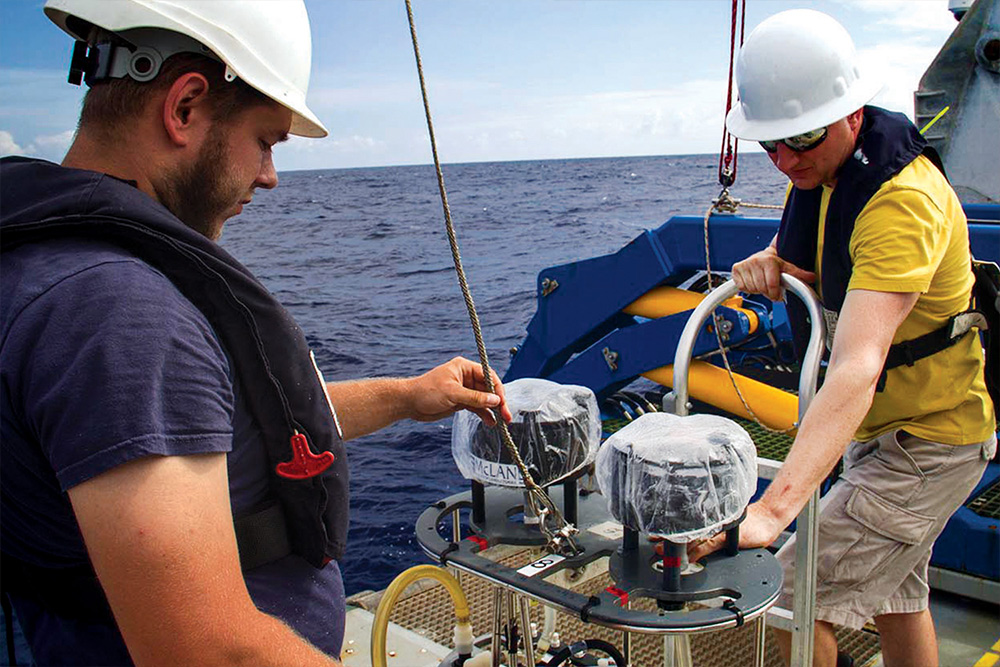
![]() The use of proteomics – analysis of organisms’ proteins – was demonstrated during the study of how hypoxia in oxygen minimum zones influences microbial growth and functions. Critical nutrient recycling reactions enabled by metal-containing enzymes have been identified.
The use of proteomics – analysis of organisms’ proteins – was demonstrated during the study of how hypoxia in oxygen minimum zones influences microbial growth and functions. Critical nutrient recycling reactions enabled by metal-containing enzymes have been identified.
![]() In-depth proteomic and genomic analyses of the samples gathered during the expedition are under way. In combination, they will provide the ability to better understand the metabolism of the oceans in the expanding oxygen minimum zones.
In-depth proteomic and genomic analyses of the samples gathered during the expedition are under way. In combination, they will provide the ability to better understand the metabolism of the oceans in the expanding oxygen minimum zones.
![]() Marine microbial life greatly influences global biogeochemical cycles. With deoxygenation now occurring across large areas of the ocean, novel in situ biomedical techniques, such as proteomics, will allow scientists to make inferences about the evolving role of microbes in reduced oxygen environments.
Marine microbial life greatly influences global biogeochemical cycles. With deoxygenation now occurring across large areas of the ocean, novel in situ biomedical techniques, such as proteomics, will allow scientists to make inferences about the evolving role of microbes in reduced oxygen environments.
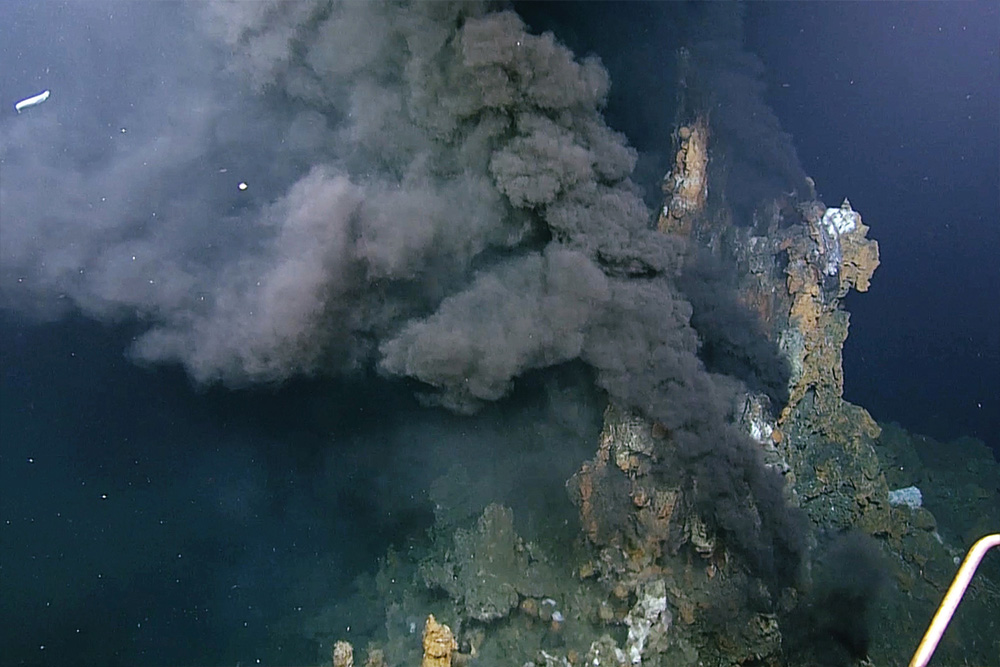
![]() An entire active hydrothermal vent field at Niua South submarine volcano in Northwestern Lau Basin was imaged with an ROV for subsequent reconstruction into a digital 3D model with sub-centimeter resolution. The digital model will offer a holistic view of these unique deep sea ecosystems and enable their exploration and analysis in virtual reality.
An entire active hydrothermal vent field at Niua South submarine volcano in Northwestern Lau Basin was imaged with an ROV for subsequent reconstruction into a digital 3D model with sub-centimeter resolution. The digital model will offer a holistic view of these unique deep sea ecosystems and enable their exploration and analysis in virtual reality.
![]() The team is exploring options for linking the panoramic ROV video with the release of an interactive virtual reality model of the entire hydrothermal vent field. These materials will serve as a citizen science platform for deep sea exploration and research and as a portal to the raw data for scientists around the world.
The team is exploring options for linking the panoramic ROV video with the release of an interactive virtual reality model of the entire hydrothermal vent field. These materials will serve as a citizen science platform for deep sea exploration and research and as a portal to the raw data for scientists around the world.
![]() The newly demonstrated high resolution ROV imaging and digital modeling methodology makes deep sea ecosystems much more amenable to quantitative analytical research, for example, by visualizing seafloor models in 3D virtual reality and subjecting them to appropriate numeric analyses.
The newly demonstrated high resolution ROV imaging and digital modeling methodology makes deep sea ecosystems much more amenable to quantitative analytical research, for example, by visualizing seafloor models in 3D virtual reality and subjecting them to appropriate numeric analyses.
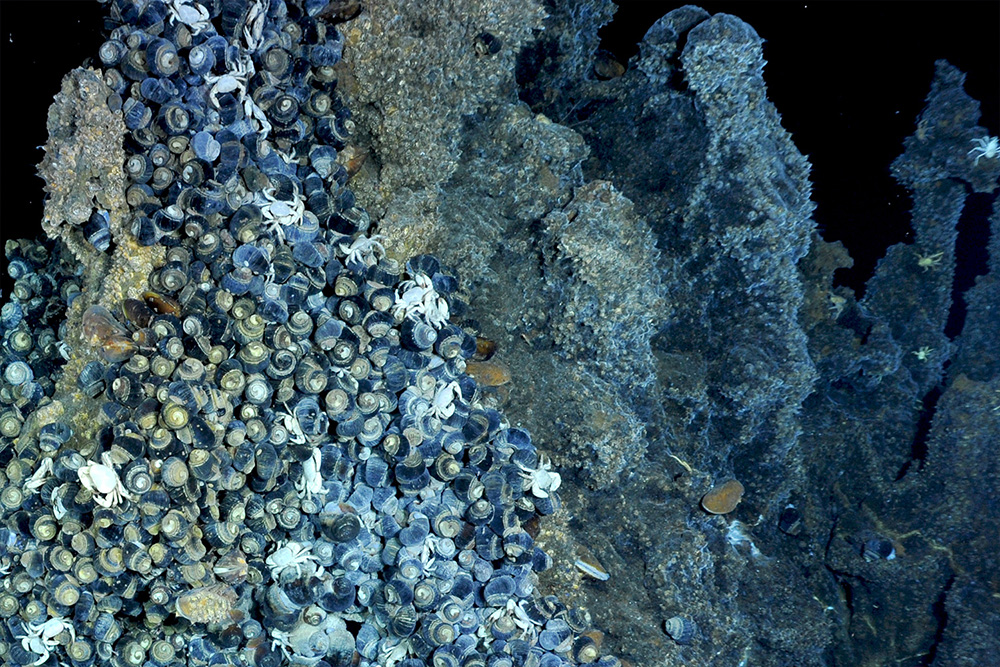
![]() Nineteen long-term study sites on the Eastern Lau Spreading Center were re-surveyed contributing to a long-term hydrothermal vent ecosystem monitoring program. Most vents were found to be long-lived, stable habitats, not changing after more than a decade.
Nineteen long-term study sites on the Eastern Lau Spreading Center were re-surveyed contributing to a long-term hydrothermal vent ecosystem monitoring program. Most vents were found to be long-lived, stable habitats, not changing after more than a decade.
![]() Assembled ecological, geochemical and geophysical data are being combined into a new vent ecosystem model. It will include high resolution seafloor photomosaics reconstructed from the ROV imagery, maps of animal communities, as well as physical and chemical environmental parameters.
Assembled ecological, geochemical and geophysical data are being combined into a new vent ecosystem model. It will include high resolution seafloor photomosaics reconstructed from the ROV imagery, maps of animal communities, as well as physical and chemical environmental parameters.
![]() Increasing worldwide demand for precious metals is driving industry to seek out new mining sites. Deep sea vents enriched in metals are prime targets for seafloor mining. The industry has based its environmental impact assessments on possibly outdated ideas that these vents form frequently. The vent communities in the western Pacific do not conform to this model, and the extent to which they would be impacted by seafloor mining must be reconsidered.
Increasing worldwide demand for precious metals is driving industry to seek out new mining sites. Deep sea vents enriched in metals are prime targets for seafloor mining. The industry has based its environmental impact assessments on possibly outdated ideas that these vents form frequently. The vent communities in the western Pacific do not conform to this model, and the extent to which they would be impacted by seafloor mining must be reconsidered.
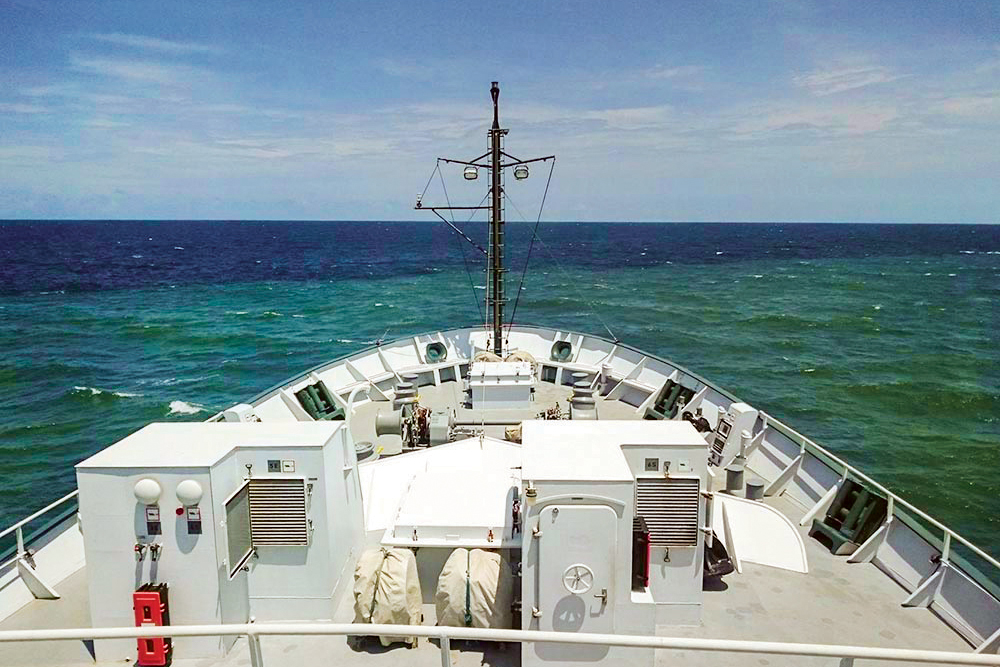
![]() The Mekong River is rapidly changing due to increased sewage and fertilizer loading, mangrove destruction, and new dams. Nutrient and isotope samples were gathered to investigate the role of the changing river plume in structuring coastal and offshore ecosystems and supplying nutrients into these waters. It was the first time in many years that an American research vessel operated in this region.
The Mekong River is rapidly changing due to increased sewage and fertilizer loading, mangrove destruction, and new dams. Nutrient and isotope samples were gathered to investigate the role of the changing river plume in structuring coastal and offshore ecosystems and supplying nutrients into these waters. It was the first time in many years that an American research vessel operated in this region.
![]() Genomic and isotopic samples, nutrient and hydrographic data will be analyzed following the cruise. Several scientific publications on the diversity of nitrogen-fixing organisms in this region and the role of physical processes in structuring the biological communities are in preparation.
Genomic and isotopic samples, nutrient and hydrographic data will be analyzed following the cruise. Several scientific publications on the diversity of nitrogen-fixing organisms in this region and the role of physical processes in structuring the biological communities are in preparation.
![]() This research provides a rare benchmark of the region’s biological state in advance of large scale anthropogenic changes in the delivery of freshwater, sediments, and nutrients from the Mekong River to the South China Sea. This is important considering that South China Sea is a major food source for Vietnam and nearby coastal states.
This research provides a rare benchmark of the region’s biological state in advance of large scale anthropogenic changes in the delivery of freshwater, sediments, and nutrients from the Mekong River to the South China Sea. This is important considering that South China Sea is a major food source for Vietnam and nearby coastal states.
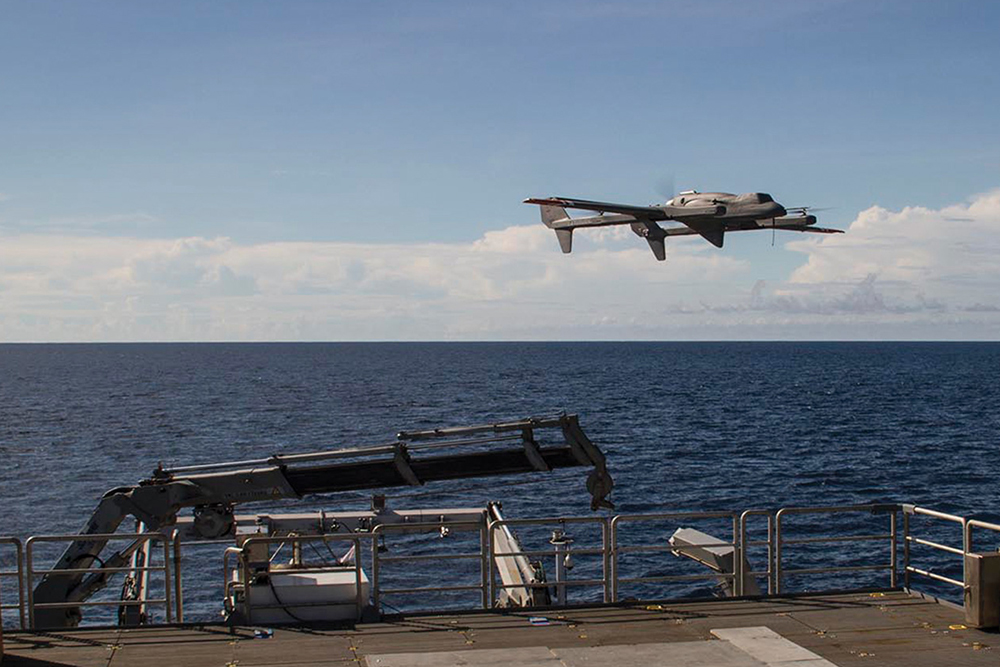
![]() Biologically essential trace metal dynamics, greenhouse gas exchange rates, and microbial communities in the sea-surface microlayer were characterized at 17 stations across the Indian and Pacific Oceans. For the first time, wide area scientific sea surface surveys were performed with a ship-deployed long endurance vertical take-off and landing robotic aircraft.
Biologically essential trace metal dynamics, greenhouse gas exchange rates, and microbial communities in the sea-surface microlayer were characterized at 17 stations across the Indian and Pacific Oceans. For the first time, wide area scientific sea surface surveys were performed with a ship-deployed long endurance vertical take-off and landing robotic aircraft.
![]() Gathered microbiological, chemical, and physical data will help scientists model and evaluate the interactions between the chemistry and microbiology of the sea surface microlayer. Heat and gas exchange rates in relation to driving environmental forces, such as wind and evaporation are also being considered in the analysis of microlayer interactions.
Gathered microbiological, chemical, and physical data will help scientists model and evaluate the interactions between the chemistry and microbiology of the sea surface microlayer. Heat and gas exchange rates in relation to driving environmental forces, such as wind and evaporation are also being considered in the analysis of microlayer interactions.
![]() This research will strengthen the foundations for weather and climate forecasting by refining the models for air-sea gas and heat exchange parameterization, and will help scientists better understand the role of the air-sea microlayer in marine biogeochemical and climate processes on a global scale.
This research will strengthen the foundations for weather and climate forecasting by refining the models for air-sea gas and heat exchange parameterization, and will help scientists better understand the role of the air-sea microlayer in marine biogeochemical and climate processes on a global scale.
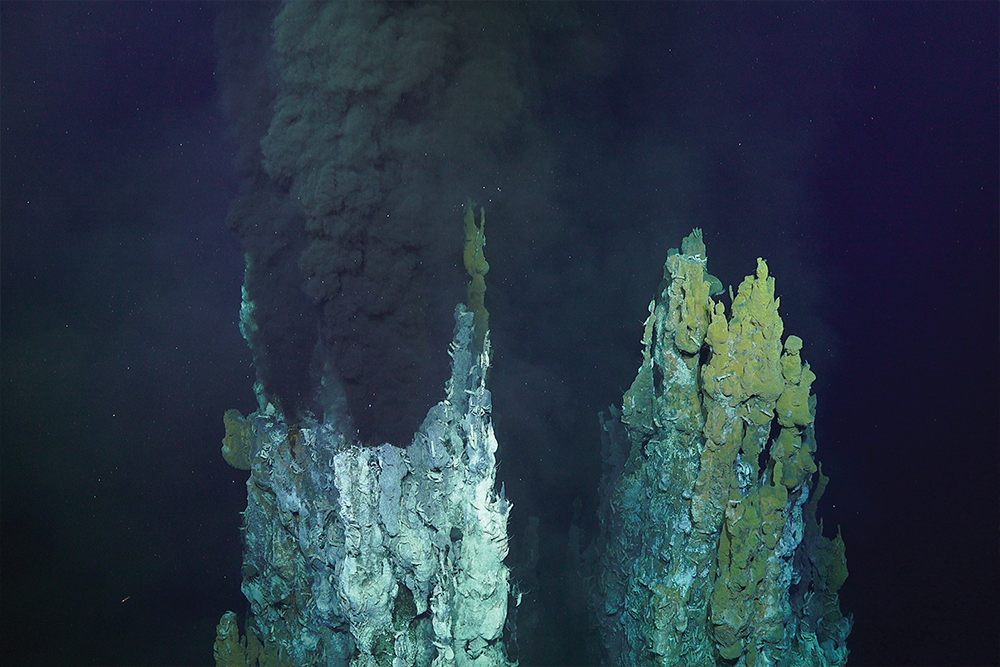
![]() The first science cruise with ROV SuBastian revealed a very consistent Mariana Back-arc vent fauna community across fields spaced ~170 km apart. The Back-arc vent fauna and fluid chemistry are significantly different from the shallower nearby volcanic arc sites.
The first science cruise with ROV SuBastian revealed a very consistent Mariana Back-arc vent fauna community across fields spaced ~170 km apart. The Back-arc vent fauna and fluid chemistry are significantly different from the shallower nearby volcanic arc sites.
![]() The samples are being analyzed for vent fluid/gas composition, biological and microbial species identification, and volcanic rock and hydrothermal mineral composition. Within three months of the cruise, NOAA placed the Marianas Monument on the national inventory for possible sanctuary designation.
The samples are being analyzed for vent fluid/gas composition, biological and microbial species identification, and volcanic rock and hydrothermal mineral composition. Within three months of the cruise, NOAA placed the Marianas Monument on the national inventory for possible sanctuary designation.
![]() We learned that large-scale tectonic processes create diverse geochemical conditions that differentiate vent biological communities. Understanding the drivers of diversity for hydrothermal vent ecosystems is critical for environmental assessments to help minimize anthropogenic harm to the marine environment.
We learned that large-scale tectonic processes create diverse geochemical conditions that differentiate vent biological communities. Understanding the drivers of diversity for hydrothermal vent ecosystems is critical for environmental assessments to help minimize anthropogenic harm to the marine environment.
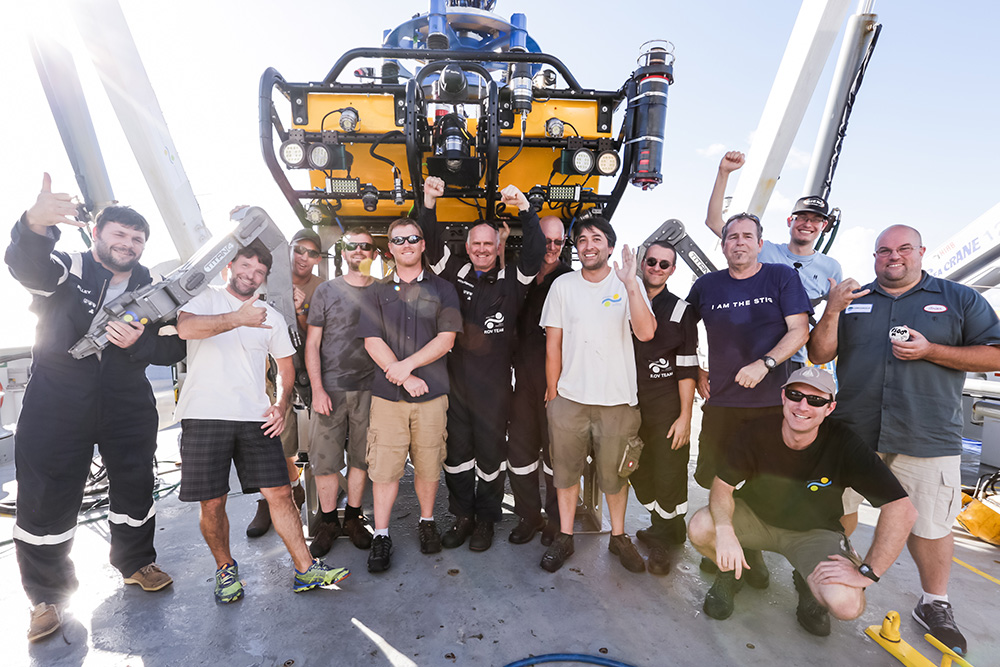
![]() ROV SuBastian was built and delivered on schedule and successfully passed the tank and sea trials. This allowed for a smooth first science mission including navigating around hydrothermal vents and using a full suite of scientific instruments integrated onto the vehicle. SuBastian successfully accomplished all of the cruise objectives.
ROV SuBastian was built and delivered on schedule and successfully passed the tank and sea trials. This allowed for a smooth first science mission including navigating around hydrothermal vents and using a full suite of scientific instruments integrated onto the vehicle. SuBastian successfully accomplished all of the cruise objectives.
![]() In early 2017, the ROV support team will perform necessary inspections and maintenance on the vehicle, winch, and docking head, as well as some upgrades based on the lessons learned in 2016 and in preparation for the planned 2017 research cruises.
In early 2017, the ROV support team will perform necessary inspections and maintenance on the vehicle, winch, and docking head, as well as some upgrades based on the lessons learned in 2016 and in preparation for the planned 2017 research cruises.
![]() The successful delivery, integration, and initial scientific operations of SuBastian on Falkor allows scientists and the public to see the new deep sea robotic capability of Schmidt Ocean Institute in action. Its many planned future deployments will help us better understand and care about our oceans.
The successful delivery, integration, and initial scientific operations of SuBastian on Falkor allows scientists and the public to see the new deep sea robotic capability of Schmidt Ocean Institute in action. Its many planned future deployments will help us better understand and care about our oceans.
